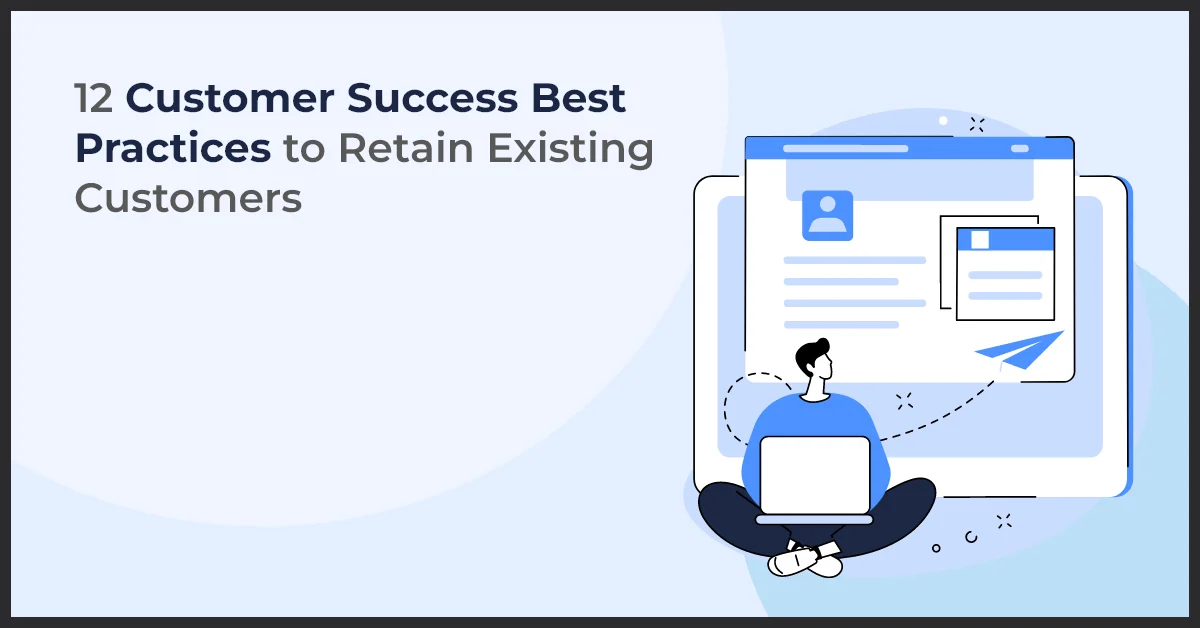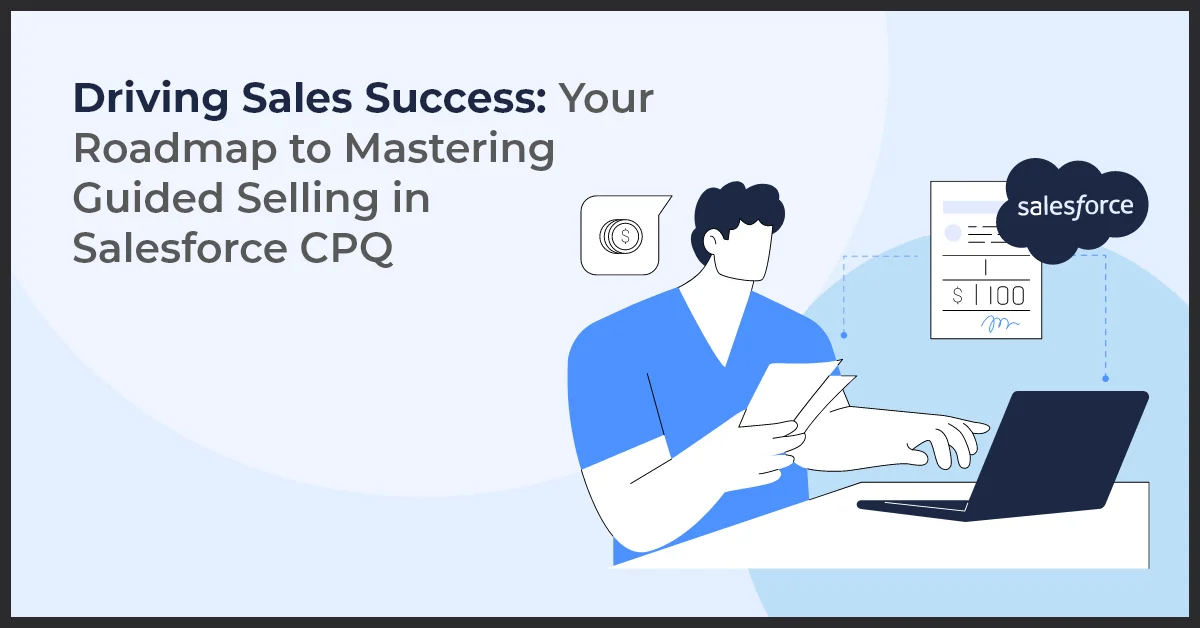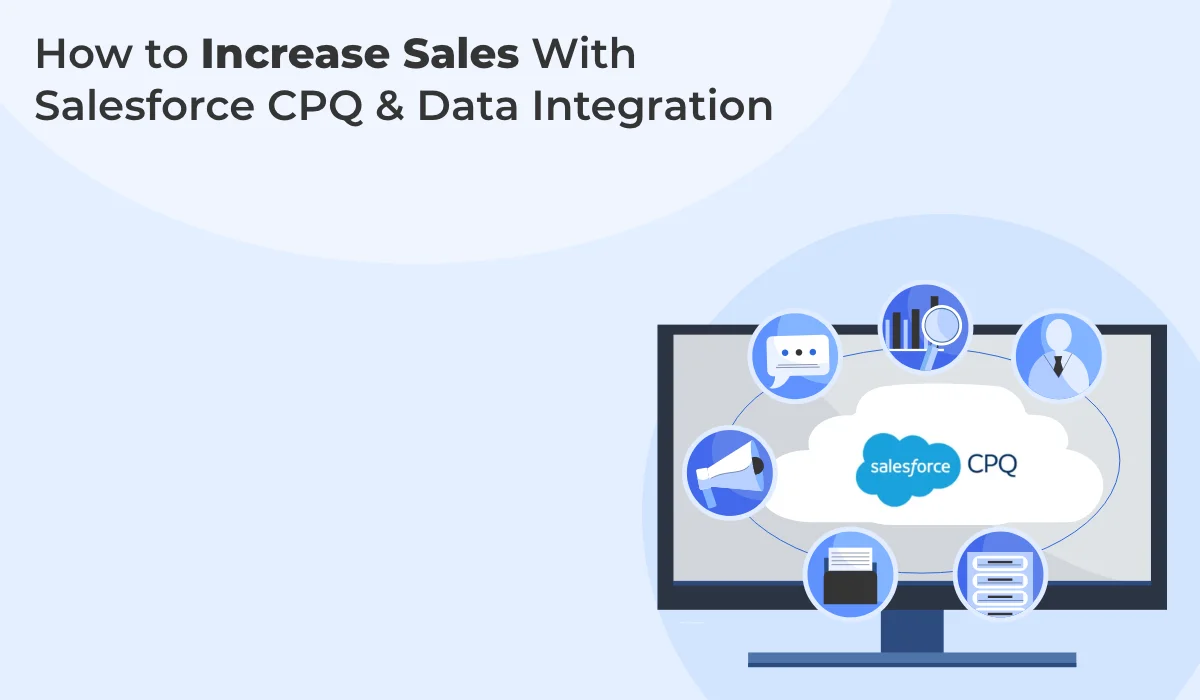12 Customer Success Best Practices to Retain Existing Customers

Published on: December 14, 2022
Updated on: June 27, 2024
704 Views
- Salesforce CPQ
8 min read
Remember Icarus—the Greek mythological figure who forgot his father’s advice not to fly too close to the sun? His overconfidence got the better of him, and his literal fall was inevitable as his wax wings melted. Too many SaaS organizations meet the same fate.
They launch a great product, get some solid revenue, and focus a little too much on acquiring new customers. Blinded by their success, they overlook the hidden perils of every SaaS business—high customer churn.
Understanding why your customers churn and, more importantly, knowing how to keep them around is vital for your business’ profitability and success. Fail to adapt, and you will quickly end up falling from the sky like Icarus. Here’s why:
- Avoidable customer churn costs $136 billion a year to US businesses alone.
- A McKinsey report claims that 92% of SaaS companies that grew less than 20% annually, failed. From the beginning, SaaS should have customer retention programs to survive.
- Acquiring a customer is 5X costlier than retaining an existing customer.
- Boosting customer retention by only 5% can increase profits from 25-95%.
Thankfully, you can avoid Icarus’ fate. To safeguard yourself from the horrors of customer churn, here are a few best practices that you can follow to skyrocket your revenue and customer retention.
What Is Customer Retention?
Customer retention is a metric used by companies to measure customer loyalty over a given timeframe. Long-term customers are likely to promote your product, bringing in more clients through word-of-mouth referrals.
Customer retention is calculated by:
Total number of customers at the end of a specific timeframe- New customers acquired)/(total number of customers at the beginning of the period
Anything north of a 5-7% churn rate starts eating into your client base. For SaaS, this number is significantly lower, with the median monthly churn rate of 0.75%.
12 Proven Ways for Customer Retention
1. Build an Engaging Onboarding Experience
When a customer makes their first purchase, it's a significant opportunity to create a great first impression. Ensuring your onboarding process is smooth and efficient can be one way to do that.
In contrast, if there are any hiccups in the onboarding process, such as mishandling information or not having a clear point of contact, it can leave a bad taste in the customer's mouth and negatively impact their impression of your business.
In addition to providing excellent customer service, a good onboarding process should include an effective program with well-timed emails, follow-up messaging, access to a self-service knowledge base, and celebratory messages to excite and impress new clients. This will ensure that your customers have a great experience and are more likely to continue using your business.
2. Offer a Personalized Experience
No two consumers are the same. They might have different requirements from your company. Therefore, avoid providing a cookie-cutter solution to clients that need personalized solutions based on various parameters such as budget and time constraints.
According to a study by Evergage, 78% of marketers say personalization has a "strong" or "very strong" impact, and 99% of marketers agree that it helps advance client relationships.
Keep your offering tailored to each consumer to ensure that the solution provided is the best fit for the issues they face. It will make them feel more connected to your business and more likely to do business with you in the future.
3. Use Newsletters
A company newsletter is an effective and low-cost way to retain customers. By sending regular updates and offers to customers via email automation, you can improve your company's reputation and keep your brand top-of-mind.
You can use an RSS feed to automatically update the content and send the newsletter on a designated frequency, eliminating the need for manual updates or remembering to hit "send." Even though it's a simple tool, newsletters can effectively remind customers of your brand every time they check their inboxes.
4. Build Trust
When it comes to building client trust in your business, two things are true:
- Customers buying from you doesn't necessarily mean they trust you.
- Building trust takes time.
81% of consumers agree that trust plays a significant role in their choice to make a purchase. But no business can deploy a universal strategy to build trust overnight.
After all, "strong belief in the reliability, truth, competence, or strength of someone or something" is the definition of trust. Therefore, continually providing value to clients is the cornerstone of developing trust since reliability is crucial.
5. Implement a Feedback System
To improve your business, knowing how your customers feel about it is crucial. This can be achieved through a customer feedback loop, which provides a system for collecting, analyzing, and distributing customer reviews and surveys.
There are various ways to collect feedback, such as through surveys like Net Promoter Score, focus groups, or by allowing customers to provide feedback after each interaction. By regularly collecting and analyzing customer feedback, your business can identify areas for improvement and share this information with relevant teams to enhance the customer experience.
6. Launch a Customer Retention Program
A customer retention program is a collection of tactics aimed at helping companies retain their customers. These programs can help you derive more value from your products, encourage your customers to share feedback and influence potential new customers, and build a community of like-minded customers.
There are various types of retention programs that can be tailored to fit your business needs. Some strategies you can implement to improve customer retention include sending regular newsletters and offers, maintaining a communication calendar, and collecting and analyzing customer feedback.
7. Create a Customer Communication Calendar
To better manage customer interactions and engagement, it's helpful to maintain an outreach calendar. This chart tracks customer communication, reminding you when it's time to reach out to customers who last interacted with your brand a while ago.
It also allows you to launch proactive customer service features, such as subscription renewal reminders, to help prevent customers from experiencing roadblocks. By following a communication calendar, your team can stay proactive in maintaining customer relationships and create opportunities for upselling and cross-selling.
8. Use Customer Service Tools
Many small to mid-sized businesses (SMBs) turn to technology to improve customer service. As your customer base grows, the demand for support can increase, requiring you to expand your support team.
Hiring more employees can be costly, so using customer service tools can help supplement your team's capabilities without needing additional hiring. These tools can handle a large volume of customer inquiries and provide quick and accurate responses, enabling your team to focus on more complex customer issues.
9. Use Upsell Strategies
Upselling is a customer retention strategy that offers customers additional products or services that complement their current purchase. This strategy can benefit you and your customer, allowing them to get better value from their investment and generate more revenue.
Upselling can also deepen the relationship between your brand and the customer, as it addresses multiple pain points and increases the customer's commitment through higher billing amounts. Overall, upselling can turn users into long-term customers and strengthen relationships with them.
10. Create Reward Programs
Building loyalty rewards programs is a win-win situation. Implementing it is a great way to show appreciation to customers who have stayed with you for a long time.
These rewards don't have to be complicated - a simple discount, upgrade, or freebie can be effective in inspiring further loyalty. By showing your customers that you value their loyalty, you can strengthen your relationships with them and encourage them to continue using your products or services.
11. Provide Over-the-Top Customer Service
Good customer service is critical for any organization, as it can make or break the customer experience. Even if your product or service has bugs or other issues, customers are often willing to overlook them if they receive prompt and helpful support.
Poor customer service is the primary reason why 67% of customers churn. Therefore, it's vital to prioritize customer service and always strive to delight customers when addressing their issues. By going above and beyond to solve their problems and provide extra value, you can turn a negative experience into a positive one and improve the overall customer experience.
12. Leverage User Community
Building a support community around your brand can benefit customers and the company. By allowing customers to interact with each other and the company, they can feel a sense of belonging and move from a formal to a personal relationship.
It can also be a valuable source of feedback, as customers can share their ideas and experiences. For example, a feature request forum, like the one used by Moz, allows customers to ask for new features and receive replies from other users and company representatives.
Moz’s example demonstrates how you too can improve the customer experience and gather valuable insights by fostering a community.
Final Thoughts
Businesses must focus on retaining customers and preventing churn from maintaining a healthy customer base. While focusing on growth is always exciting, it's equally important to address churn and ensure that your customer base is stable and sustainable.
By fortifying your retention rate and plugging any leaks in your customer bucket, you can ensure that your business continues to thrive and grow. And, as the old saying goes, it's better to have a little ice cream and rest than to work yourself to the bone without any rewards.
Need help in getting started? Let Growth Natives help. Contact us today to help you build strong relationships and retain loyalty.



